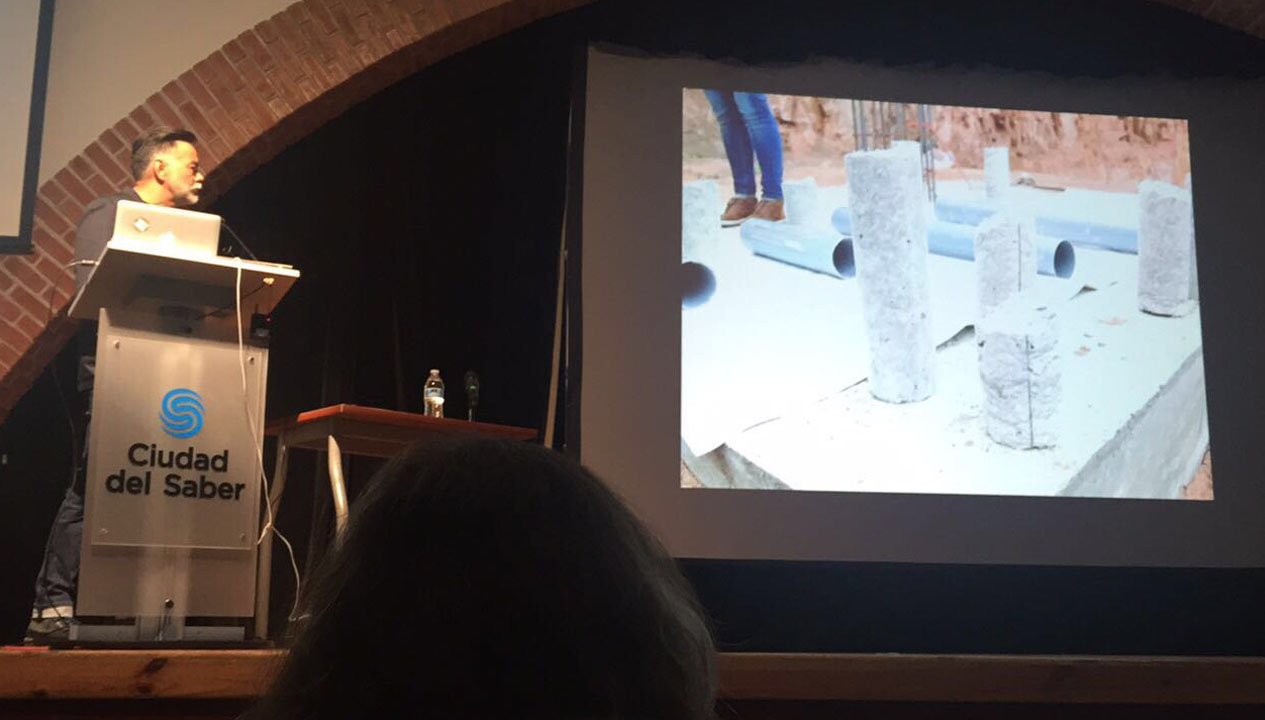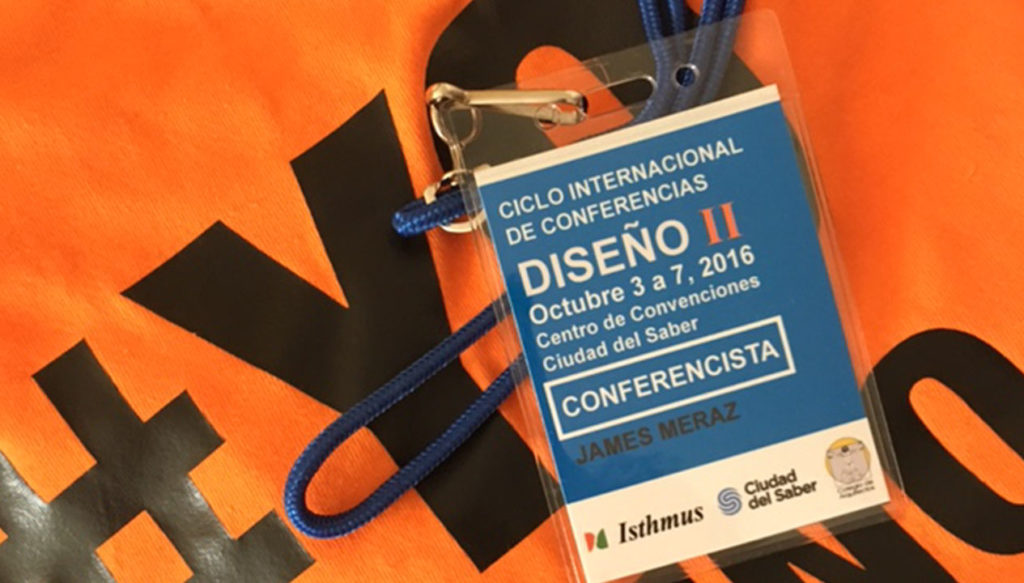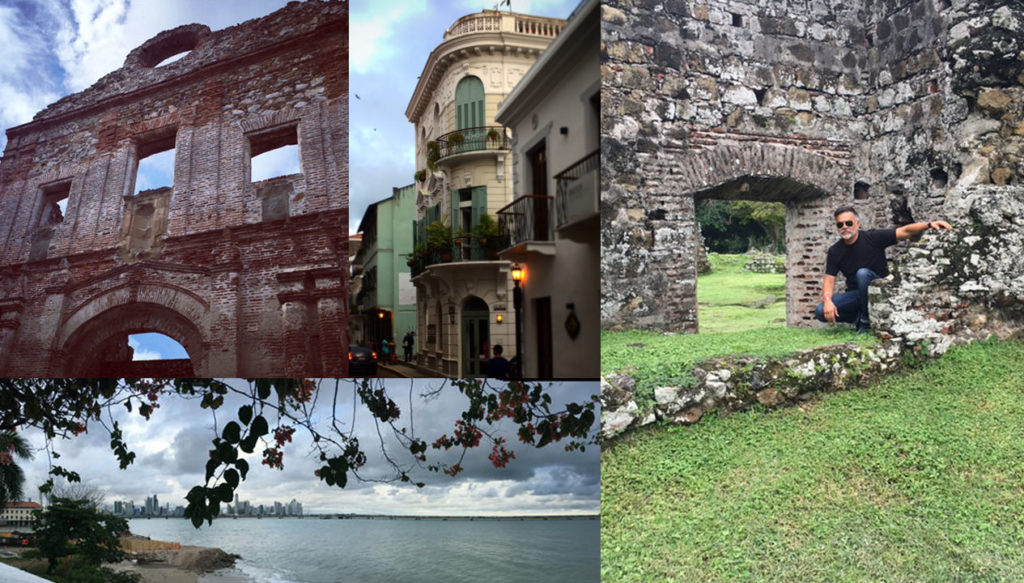When I first heard of this design conference I was intrigued.
I learned that this this International lecture series/conference is known for bringing together some of the best and most prolific design voices in Latin America, and the Caribbean, at Isthmus School of Architecture and Industrial Design in Panama City, Panama. For one week of intensive lectures. For the week of lectures classes are suspended and the entire student body attends lectures and reports on each speaker and their content.
After expressing interest in this I received a very enthusiastic phone call from Carlos Morales, Director of the University. I asked him if the lectures needed to be given in Spanish, as I was not entirely comfortable with this. He shot back at me “images and pencils speak every language”, and with that I was in.
The speakers were from various disciplines of design, such as graphics, architecture, industrial design and nautical design. I pondered what would be a theme that could tie this all together.
Carlos, mentioned that some connection to “innovation” would be a point of departure, yet the dialogue could be quite open ended and the point is to inspire and generate a meeting point of global design thinking for the Panamanian and Central American community.
Upon arriving in Panama, I couldn’t help but think about my experiences in Central America, and up to that point had been limited to Costa Rica, the host country for our Eco Research Lab studio. In this studio we completely immerse ourselves in the notion of biomimicry and the country’s rich bio-diverslty. There is so much to learn from nature’s behaviour and performance that we can bring to our design intelligence.
Panama is building upon this notion of ecological stewardship, and Panama City is literally 45 minutes away from Soberania rainforest, which has over 500 species of birds and over 100 species of mammals.
In addition, I was absolutely struck with ruins and relics of Panama Viejo and Casco Viejo, within Panama City.
I always look for the spirit of a city through its relationship with nature and its built history. In Panama this dichotomy is present and evolving, and forms the lens in which the design community views and shapes the future. The university is located in the area known as ‘Ciudad del Saber” which translates as ‘City of Knowledge” and is the former location of the American military headquarters at the Panama Canal Zone. The government has converted this area to a center of knowledge and learning, and is occupied by technology, academic and non-governmental organizations.
I was tasked to give two one hour lectures, and decided to create a narrative of innovation, and each lecture would make a case for two entirely different positions on how innovation is employed in the pedagogical design process. I also felt strongly about making this a relevant topic for young design students.
I premised the lecture series with notions of what is innovation:
• Innovation design is timeless-outside current trends
• It’s design that is striking, elegant, intuitive
• It’s new thinking, solving old problems in a new way
These are notions or ideas that sound good, but we have heard time and time again, and can be somewhat cliché.
This set up my lectures to take on two divergent strong positions.
The first lecture positioned innovation as this:
• Innovation is at the core of human centered design, that is to shape environments and experiences that give meaning and explore a vision of humanitarian need and social impact.
• PROVOKING designers to work collaboratively with empathy, compassion and conscience to discover new unknown potentials.
This thesis set up the case studies for many projects I have been involved with in my experience with Designmatters, and I focused on the process and journey of the Armenian Genocide Memorial Project and TeenArt Park that I previously wrote about, and is presented in detail on the Designmatters archive. I felt these two projects capture the essence of this position of innovation.
For my other lecture, I took the position of innovation as the following:
• Innovation is at the core of pushing boundaries in technology, data-driven, new toolsets, and digital fabrication modes.
• PROVOKING hi-risk modalities, with unknowns that can yield hi-results for speculative futures.
This position was the perfect set-up for a very different case study. Our experimental pavilion project that we created in Costa Brava, Spain, where the process engaged much testing, failures, and material and fabrication inventions. This project has been written about at length in ArtCenter’s Dot publication.
I was approached after my dialogues by many of the design students, and colleagues and they seemed to be super intrigued with the notion of working collaboratively and multi-disciplinary, and the results that can come from this process of thinking and exploring.
Even though I positioned these approaches as two completely different positions, I began to evolve my position based on reflection and the audience response.
Innovation, and invention can be achieved through working collaboratively with passion and intent to create new paradigms of the human experience.
List of other speakers:
Sandra Barclay, Barclay&Crouse Architects, Peru and France
Ramon Benedito, Benedito Industrial Design, Barcelona, Spain
Guillermo Crovari & Taller Crovari, Chile
Pablo Forero & Julian Estrepo, Taller 301 Architects, Bogota, Colombia
Felipe Taborda, Diseño Grafico, Rio, Brazil
Gabriel Diaz Montemayor, Arquitecto, Monterey, Mexico


